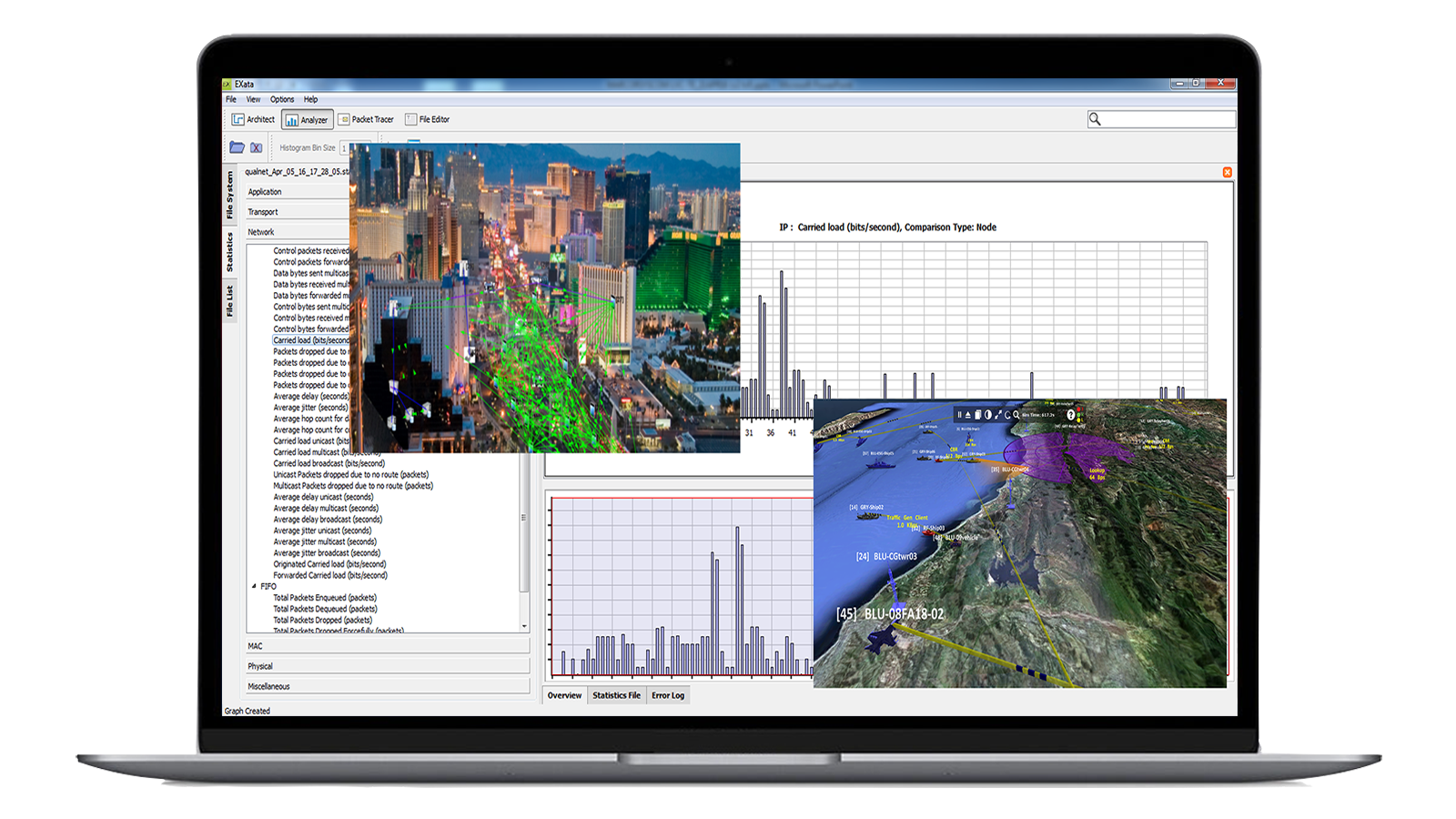What are you looking for?
EXata Network Modeling
Network Digital Twins — Development, analysis, testing and cyber assessment
Starting from
Highlights
Network digital twin solutions to model and visualize communication networks and cyber threats
EXata Network Modeling allows the user to create a network digital twin, for real-time network simulation and emulation that replicates the behavior of a network. The emulator provides an exact, high quality, reproduction of external behavior so that the emulated system is indistinguishable from the real system. Network Emulation software provides a cost-effective method of evaluating new network technologies before actual systems or networks are built.
EXata Network Modeling uses a software virtual network (SVN) to digitally represent the entire network, the various protocol layers, antennas, and devices. The system can interoperate, at one or more protocol layers, with real radios and devices to provide hardware-in-the-loop capabilities. EXata can also be connected to systems with real applications, which run on the SVN just as they would run on real networks.
What Makes the EXata Network Modeling Unique?
- Test and validate interoperability, scalability, and performance: Seamless integration with live equipment such as servers, computers, radios, and sensors as well as a full network environment
- Accurately analyze behavior under different network conditions: Integrate with live applications such as VoIP, chat, video feeds, file transfers, and database queries
- Analyze and capture network traffic with packet sniffer/analysis tools
- Interaction with Simple Network Management Protocol (SNMP) managers from companies such as Hewlett-Packard, IBM, and SolarWinds


21st Century Wargaming
EXata Network Modeling efficiently interfaces network digital twins with wargaming platforms. Wargaming scenarios can jointly run on EXata, and many wargaming platforms, in both autonomous and interactive modes.
Autonomous mode - all actions of all platforms are pre-configured. This mode is useful to understand what-if scenarios where multiple configurations, behaviors, or operational conditions are used.
Interactive mode - analysts or trainees, interact with the scenario via a Human-In-The-Loop (HITL) interface. This mode is useful for training Red or Blue Forces: trainees can inject cyberattacks directly into the scenario (Red Force training) or respond to scripted cyber attacks to ensure mission success (Blue Force training).
Creating a Network Digital Twin
Given the complexity of most networks, creating a digital twin which accurately represents the topology, configuration, and traffic of an existing physical network can be challenging. EXata is part of a complete ecosystem of tools for automatically creating network digital twins, as well as modifying, executing, visualizing, and analyzing their performance. This image depicts the steps and tools for creating network digital twins. While many of the steps are common to all types of network digital twins, some steps and tools depend on the type of network that the twin represents (a physical or constructive network) and its intended use (network performance or cyber resilience assessment).


Speed, Accuracy, Fidelity
EXata Network Modeling addresses the challenge of achieving fast network simulation speed, without compromising the accuracy of results, for at-scale, high-fidelity wireless networks.
- Scalability to thousands of nodes enables more sophisticated design and analysis
- Real-time simulation optimizes productivity
- High-fidelity models deliver accurate results
- Cost-effective “lab-based risk reduction” network simulation technology provides solutions to mission-critical, business-critical problems
Ensure the network modeling tool you choose delivers optimum performance and reliability. Check out our blog: 5 Requirements Your Network Emulator Tool Must Satisfy.
Extend the Capabilities of Your SN100EXBA
Featured Resources
Want help or have questions?






